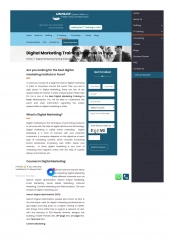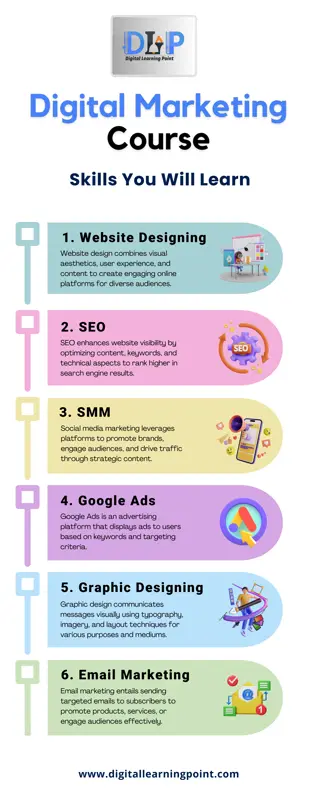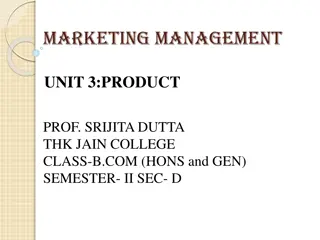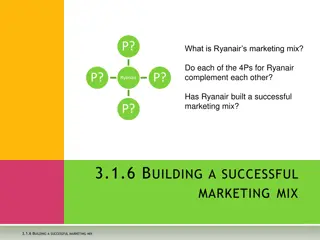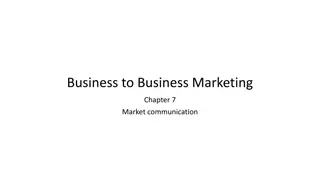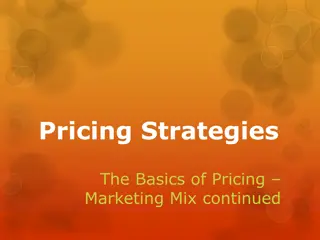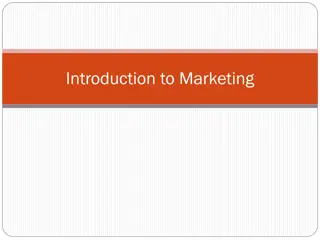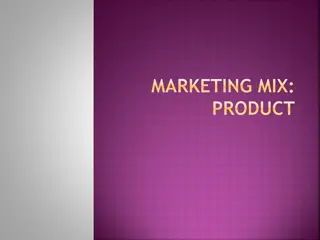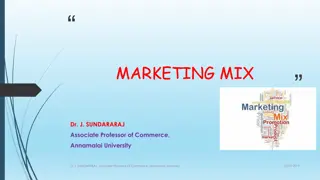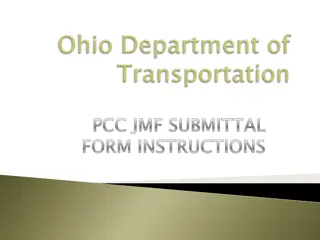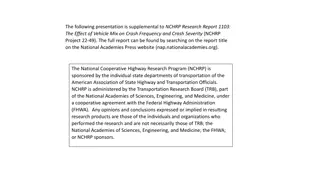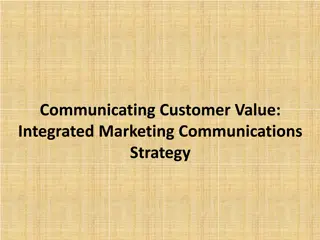Understanding the Marketing Mix for Successful Business Strategies
Explore the key elements of the marketing mix for successful business strategies, including product management, packaging, labelling, pricing techniques, and factors influencing pricing decisions. Learn how integrating the four Ps - Price, Product, Place, and Promotion - can drive marketing success and profitability.
Download Presentation

Please find below an Image/Link to download the presentation.
The content on the website is provided AS IS for your information and personal use only. It may not be sold, licensed, or shared on other websites without obtaining consent from the author. Download presentation by click this link. If you encounter any issues during the download, it is possible that the publisher has removed the file from their server.
E N D
Presentation Transcript
MALUTI TVET COLLEGE BETHLEHEM CAMPUS Ms MAJONG
Introduction: The marketing mix All four Ps must be integrated to form a successful marketing mix. The marketing manager controls the four Ps The four Ps are: Price Product Place Promotion
Product description A product is an item that has been produced with the aim of satisfying customers needs. A product is tangible meaning it can be touched. Each product possesses features and benefits. A product feature is a characteristic of your product. A product benefit is an advantage that a product offers to a customer. When doing marketing, always sell the product benefits first and support this with the features of the product. E.g. when you sell burglar bars you are not really selling burglar bars but security
Packaging DEF: Packaging is the wrapping that surrounds a product. It protects a product, but also assists in the marketing of a product, as it identifies, describes, displays and promotes an item. A distinction can be made between different types of packaging. Types of packaging: Family packaging, Individual packaging, Multiple packaging, Kaleidoscope and Re- usable packaging.
Labelling Functions of Labelling: It provides the consumer with important information. It describes the content. It contains instructions and warnings. It gives information about the ingredients/ contents. Example of labelling:
Pricing The importance of pricing for profit To be successful, a business needs to sell the correct product to the customer at the correct place and at the correct price. The objective of most businesses is to make a profit. A profit can only be made if cost calculations are done correctly
Pricing techniques: Pricing techniques include: Skimming price. Penetration price. Cost-plus pricing. Competitive pricing. Odd pricing. Discounts. Leader pricing.
Advertising Advertising is a non-personal, paid-for and persuasive form of promotion by identified sponsors through various forms of media. Selecting Advertising Media
Creating an advertisement When creating a written advertisement, take note of the following points: Clearly state the business s name. Include the logo and/or trademark of the business. Include a special . Be careful not to include too much detail and stimuli in the advertisement. Make use of colour. Use different fonts. Include the address and contact details of the business. Use pictures and drawings, where applicable. Use correct and creative language. Put a border around the advertisement. Keep the style consistent to enable customers to identify your business immediately
AIDA acronym AIDA stands for attention, interest, desire and action . Attention: Do something to grab the attention of the customer. Interest: State the benefits and advantages of the product. Desire: Show that you can solve the problem of the customer. Action: Get the customer to buy your product.
Measuring the success of an advertisement Compare the sales before and after advertising. Compare the number of customers visiting your shop before and after advertising. Build in something into the advertisement to measure the reaction. Ask customers where they heard about the business/product.
Publicity Did you know? Publicity means that a message or report about an enterprise is placed in a newspaper free of charge and it can also be broadcast. It is free. It has a longer lifespan than advertising. It reaches a far wider audience than advertising generally does. It has greater credibility. It must, however, also be remembered that negative publicity can harm the image of an organisation.
Activity Write a short reflection of the unit. Design a flyer or an advertisement for your ideal business and send to group WhatsApp



